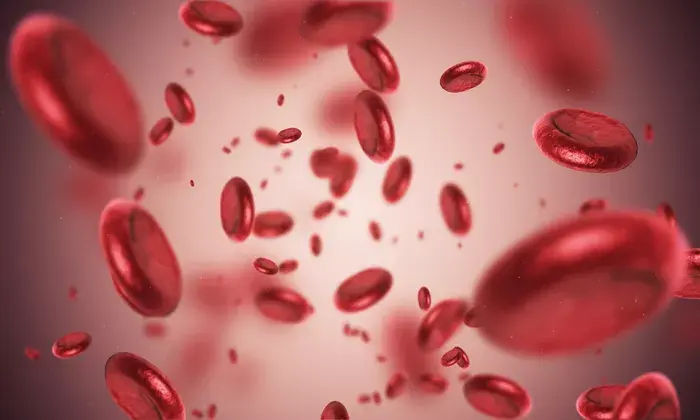When your child has a runny nose, cough, or fever, it’s natural to worry. Parents often wonder if a simple cold can turn into something more serious, like Respiratory Syncytial Virus (RSV). While colds and RSV share some similarities, they are caused by different viruses and have distinct characteristics. This article will explain the differences between a cold and RSV, how they affect children, and whether a cold can develop into RSV. We’ll also discuss prevention and treatment strategies to keep your child healthy.
What is a Cold?
Causes and Symptoms
A cold, also known as the common cold, is usually caused by rhinoviruses. It affects the upper respiratory tract, including the nose and throat. Symptoms include:
- Runny or stuffy nose
- Sneezing
- Sore throat
- Mild cough
- Low-grade fever (in some cases)
Colds are generally mild and resolve within 7-10 days. However, they can make children feel uncomfortable and irritable.
How Colds Spread
Colds spread through respiratory droplets when an infected person coughs or sneezes. They can also spread by touching surfaces contaminated with the virus and then touching the face. Children, especially those in daycare or school, are more susceptible due to close contact with others.
What is RSV?
Causes and Symptoms
RSV is a highly contagious virus that affects the respiratory system. It is the most common cause of bronchiolitis (inflammation of the small airways in the lungs) and pneumonia in children under one year old. Symptoms of RSV include:
- Severe cough
- Wheezing
- Difficulty breathing
- High fever
- Nasal congestion
In severe cases, RSV can lead to hospitalization, especially in infants and children with weakened immune systems.
High-Risk Groups
Infants under six months, premature babies, and children with chronic lung or heart conditions are at higher risk of severe RSV infections. RSV can also affect older adults and individuals with weakened immune systems.
Can a Cold Turn into RSV?
Differences Between Colds and RSV
While colds and RSV are both respiratory infections, they are caused by different viruses. A cold is usually caused by rhinoviruses, while RSV is caused by the Respiratory Syncytial Virus. The symptoms of RSV are often more severe and can affect the lower respiratory tract, leading to complications like bronchiolitis or pneumonia.
Can One Lead to the Other?
A cold cannot directly turn into RSV because they are caused by different viruses. However, having a cold can weaken a child’s immune system, making them more susceptible to other infections, including RSV. For example, if a child with a cold is exposed to RSV, they may develop an RSV infection more easily.
Why Children Are More Vulnerable
Immune System Development
Children, especially infants, have immature immune systems, making it harder for them to fight off infections. Their airways are also smaller, so inflammation caused by viruses like RSV can lead to breathing difficulties.
Environmental Factors
Children in daycare or school are more likely to be exposed to viruses due to close contact with others. Poor hand hygiene and sharing toys or utensils can also increase the risk of infection.
Prevention Strategies
Hygiene Practices
- Wash hands frequently with soap and water.
- Avoid touching the face, especially the eyes, nose, and mouth.
- Disinfect frequently touched surfaces, such as doorknobs and toys36.
Vaccination and Medications
While there is no vaccine for the common cold, RSV prevention options are available. For high-risk infants, a monoclonal antibody called palivizumab can provide temporary protection against RSV. Researchers are also developing RSV vaccines, some of which have shown promise in clinical trials.
Treatment Options
Managing Colds
- Ensure your child gets plenty of rest.
- Use saline drops to relieve nasal congestion.
- Offer warm fluids like soup or tea to soothe the throat.
- Over-the-counter medications (for older children) can help reduce fever and discomfort.
Treating RSV
- For mild cases, home care similar to cold treatment is sufficient.
- In severe cases, hospitalization may be required for oxygen therapy or mechanical ventilation.
- Nebulizers and bronchodilators can help ease breathing difficulties.
Psychological Impact on Children and Parents
Emotional Stress
Illnesses like RSV can be frightening for both children and parents. Children may feel anxious due to difficulty breathing, while parents may experience stress and guilt. Providing reassurance and maintaining a calm environment can help ease these emotions.
Coping Mechanisms
- Encourage open communication with your child about their feelings.
- Practice relaxation techniques, such as deep breathing or storytelling.
- Seek support from healthcare professionals or support groups if needed.
Conclusion
While a cold cannot turn into RSV, it can weaken a child’s immune system, making them more susceptible to RSV and other infections. Understanding the differences between these illnesses, recognizing symptoms early, and taking preventive measures can help protect your child’s health. If you suspect your child has RSV, seek medical attention promptly to ensure they receive the appropriate care.
By staying informed and proactive, you can help your child navigate respiratory illnesses with confidence and ease.
Related topics:
What Age Is SIDS No Longer A Risk
What Stage Of A Cold Is A Runny Nose?
What To Give A 5-Month-Old With A Cold?


